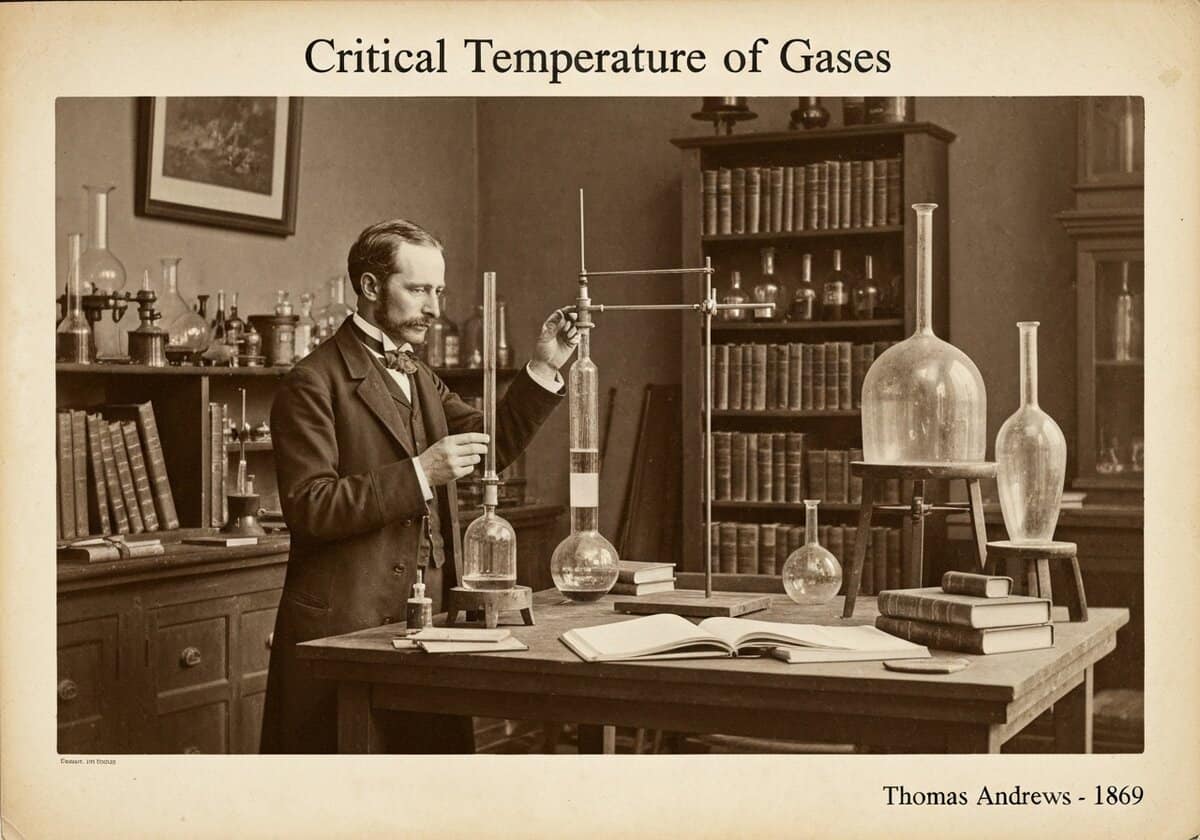临界温度是指无论施加何种压力,高于该温度都无法形成明显液相的温度。每种气体都有其独特的临界温度。要使气体液化,必须先将其冷却至该温度以下。这一概念由托马斯·安德鲁斯提出,对于理解任何液化过程所需的条件至关重要。


临界温度是指无论施加何种压力,高于该温度都无法形成明显液相的温度。每种气体都有其独特的临界温度。要使气体液化,必须先将其冷却至该温度以下。这一概念由托马斯·安德鲁斯提出,对于理解任何液化过程所需的条件至关重要。
Thomas Andrews’ experiments in the 1860s on carbon dioxide were pivotal. He meticulously measured its pressure-volume-temperature (P-V-T) relationships and discovered that above approximately 30.98 °C (304.1 K), CO2 could not be liquefied no matter how much 压力 was applied. He termed this the ‘critical temperature.’ Below this temperature, increasing the pressure on the gas would eventually cause it to condense into a liquid. At the critical temperature itself, the gas transitions into a liquid at a specific ‘critical pressure’ and ‘critical volume,’ a state known as the critical point. At this point, the densities of the liquid and gas phases become equal, and the meniscus separating them disappears. The substance becomes a supercritical fluid, possessing properties of both a gas and a liquid. This discovery was crucial because it explained why earlier attempts by scientists like Faraday to liquefy gases such as oxygen, nitrogen, and hydrogen had failed; they were not cooling the gases below their respective, much lower, critical temperatures, a prerequisite for liquefaction by compression.
迎接新挑战
机械工程师、项目、工艺工程师或研发经理
可在短时间内接受新的挑战。
通过 LinkedIn 联系我
塑料金属电子集成、成本设计、GMP、人体工程学、中高容量设备和耗材、精益制造、受监管行业、CE 和 FDA、CAD、Solidworks、精益西格玛黑带、医疗 ISO 13485
气体的临界温度
(如果日期不详或不相关,例如 "流体力学",则对其显著出现的时间作了四舍五入的估计)。
相关发明、创新和技术原理
{{标题}}
{%,如果摘录 %}{{ 摘录 | truncatewords:55 }}
{% endif %}